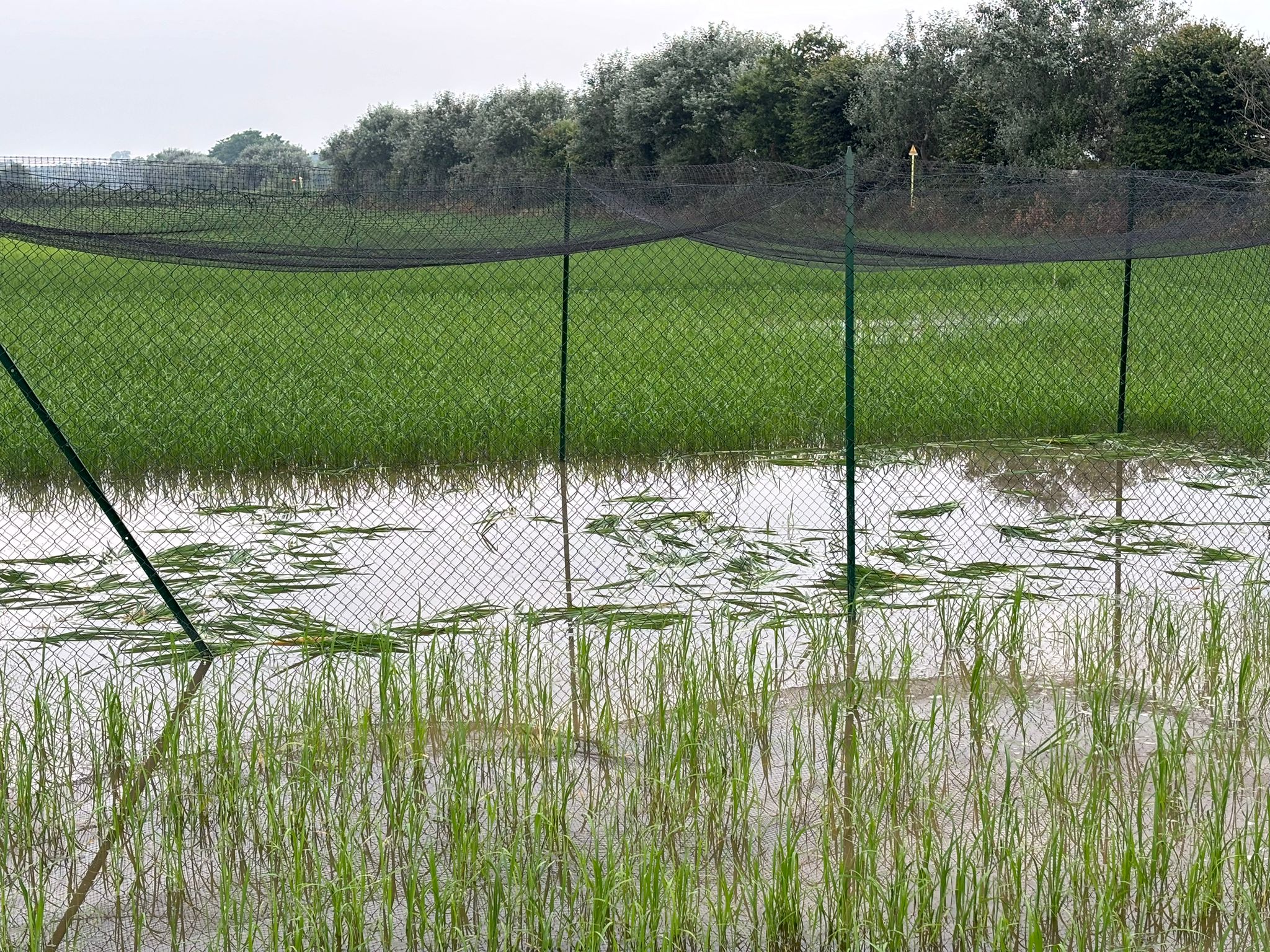Under the shadow of night, criminals have put an end to an important field test in Italy. Scientists had planted a new experimental variety of rice that could be the answer to one of the most destructive diseases this crop faces – but the field was recently broken into and destroyed.
If you have ever had a good risotto, you most likely had it with arborio rice. This variety is ideal for that kind of dish based on the consistency of its grains when cooked. But the popular Italian variety is also susceptible to a deadly fungus, Pyricularia oryzae. Every year, the fungus destroys an amount of rice that could have fed 60 million people.
There is little to be done to stop the fungus. Fungicide treatments have been effective for a while, but it has pushed the fungus to adapt to them and left us to ingest the fungicide. A potential solution came in 2017 with the development of RIS8imo, a variety of rice resistant to the dangerous fungus that has many nicknames such as rice blast, rotten neck, and rice seedling blight.
The variety was created with the revolutionary genetic technique CRISPR-Cas9. The pioneers of it, Emmanuelle Charpentier and Jennifer Doudna were honored with the Nobel Prize in Chemistry in 2020. In Italy, it is illegal to plant genetically modified organisms (GMOs) but this variety of rice is not a GMO.
There are three genes in the arborio rice that make it more susceptible to the fungus. Using the technique, the team made sure that those genes were inactivated variants. There’s nothing added to the rice – some species of rice naturally do that.

The destroyed field. The name of the rice, RIS8imo, is a pun in Italian. It means Best Rice.
Image Credit: Vittoria Brambilla/Università Statale di Milano
The only difference is that this natural development was made in the lab when it comes to RIS8imo. For this reason, in Italy this falls under the TEA category: assisted evolution techniques in agriculture. A law was passed last year to put specific requirements into testing potential crops developed like this.
The rice field in this case was 28 square meters (302 square feet), planted on May 13. It was fenced and surrounded by another fenced field of 400 square meters (4,306 square feet) field to make sure that no rice could be spread beyond either through the weather or animals.
Just over a month later, on June 21, the field was destroyed.
In a press release, the creators of the rice, Vittoria Brambilla and Fabio Fornara, Università Statale di Milano explain how the goal of their research is to create sustainable agriculture that is not dependent on chemical fungicides. The work on the site came after a broad agreement from the local community and other stakeholders.
“As publicly-funded scientists we express shock and sadness at having suffered this unjustified violence, the result of obscurantism and anti-scientific impulses,” Brambilla and Fornara stated.
The team is expected to continue the work, given it could provide food for so many people, expressing hope that the Italian government would step up by protecting such experiments.
Source Link: Vandals Purposely Destroy Italy’s Landmark First Gene-Edited Rice Crop Trial